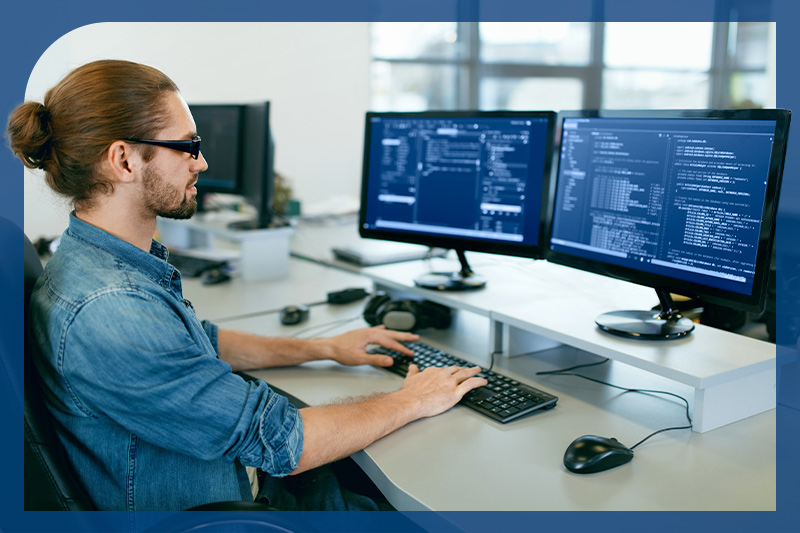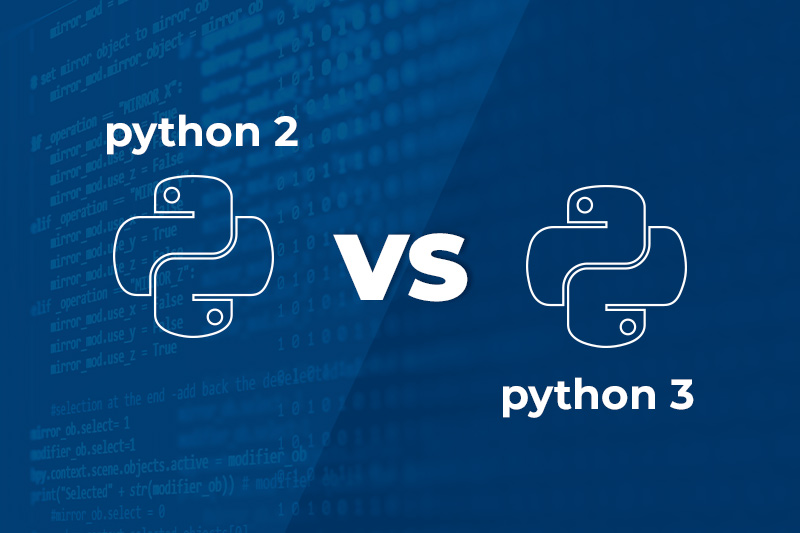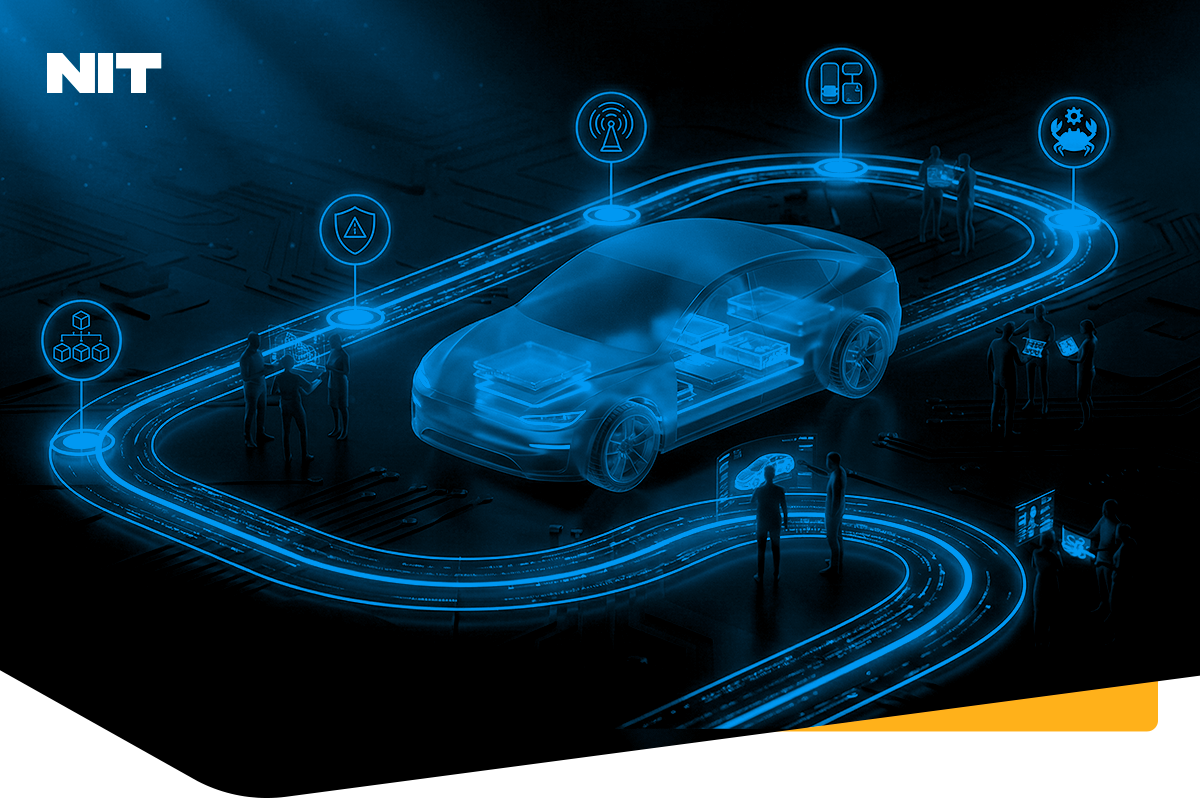
Like a friendly guide in the world of coding, Python welcomes beginners with open arms, offering an easy-to-learn syntax that makes the journey into the world of programming an incredible experience. Behind its clean and straightforward exterior lies a powerhouse of capabilities, making Python not just a language but a dynamic force in the world of technology.
To learn more about this game-changing programming language, we had an interesting conversation with our instructor at NIT Academy, Ivan Kastelan.
The first thing that fascinated our interlocutor is how easy it is to learn and use Python. “The creators of the Python programming language have tried to make this language really accessible, and in many study programs, it is used as a first language when you learn programming. Its ease of usage is why it's most popular.” - pointed Ivan.

The greatness of this language comes in the form of many implemented modules and libraries, so whatever comes to your mind that you may want to implement - there is a very high chance that you'll find an already implemented solution. Then, you'll just need to import the library and call certain functions. The result is a reduction in implementation time, which is always very important.
“From my experience, I saw big similarities with Matlab, which was very popular before in data-related sciences and developing algorithms for many purposes. I see that Python is also taking over in that field - Data analysis, signal processing, algorithm development, machine learning, and artificial intelligence.”
In terms of frameworks that are most commonly used, Python boasts several testing frameworks, with two prominent ones being:
Unittest, which is integrated into the standard Python library, provides a simple yet effective framework for writing and running test cases.
Pytest, an object-oriented testing framework, offers advanced features and is widely used for testing Python applications.
Elevate Your Programming Skills with NIT Academy Courses
NIT courses are designed to provide participants with extensive knowledge in programming. Therefore, we expect them to have some basic programming background already. They should know what the loops are, what the functions are, and what the classes are, so we don't teach the basics - we just teach the language.
The first few moduli focus on syntax, what is different from other languages, and how it's interpreted and executed. Then we move to exploring what Python already offers in its standard library in terms of data collections because another big advantage of Python is working with collections of data. “Working with collections of data is very easy in Python. The first language that I learned was C, and I remember having huge trouble implementing a matrix of data. You have to do two-dimensional arrays and use some already built-in functions. In Python, it's much easier because all of these collections are used just as any other type - numbers or strings. You write a few lines of code, and THERE, you have what you need.” - explained Ivan.
Python programming course is where we explore data collections, and we also talk about implementing functions. Then we proceed to object-oriented programming - equivalence to that would be C++ in that world. And that concludes the basics course.
In the Advanced Python programming course, we move on to more advanced topics like advanced testing, advanced topics in Object Oriented Programming, multiprocessing, how to create programs that have multiple processes, multiple threads running in parallel and integration with C language.

Growth of IT industry influenced by Python
If we talk about C/C++, low-level programming is focused more on low-level programming issues, while Python is more focused on algorithms, your design, on the solution, and you don't worry that much about implementation details. C has its own advantages. It's a compiled language, so the final solution can be faster than the solution in Python. When you write a program, and you run it, it's executed differently. In Python, it's interpreted, and in C, it's compiled.
“In my experience, it was easier to use those implemented things in Python than in C. Compiled languages can be faster, but I saw that nowadays, even in Python, they made some frameworks that allow optimisation of Python code, and it’s mentioned in some examples that Python was even faster than the C program. So it's a competition.” - said Ivan.
Python is used everywhere, and it's getting ground in many fields in which it was not popular up until recently, like, for example, hardware design. Some courses deal with the verification of digital systems, such as electric circuits, so you write a Python program to verify those circuits. It says a lot about the simplicity and multipurpose of this language that this field had its own languages before.
Ivan also shared with us what are some other benefits of Python: “It's free, it's open source, you just download the software, and it's easy to install, you can use a regular editor, and you don't need a very powerful computer. The very wide community can access it easily.” He also said there is a very large standard library with already implemented functionalities and its platform independent. Because it's interpreted language, the interpreter takes care of the fact that your program is run on a particular platform, so when you're writing your program, you don't have to worry about what platform is below. It's an interpreter's job.
There are some notable changes from Python 2 to Python 3, for example, the print function transitioning from a statement to a function, requiring parentheses. This syntax difference hinders the compatibility of Python 2 code with the Python 3 interpreter. Additionally, Python 3 introduces significant improvements, such as default Unicode string encoding, enhanced mathematical operations with distinct float and integer division operators, and an expanded set of pre-implemented modules and libraries. The version upgrade enhances visibility in code and offers a more extensive set of statements, reinforcing the preference for using the latest Python 3 version.

Python, with its user-friendly syntax, serves as a powerful language for both beginners and seasoned developers. NIT Academy's courses highlight Python's efficiency in handling data and functions, emphasizing its broad usage in diverse domains.
As Ivan Kastelan explained, Python's simplicity and adaptability is making it a preferred language in hardware design, as well as emerging fields like AI and machine learning. Python's open-source nature, easy installation, and extensive library support contribute to its accessibility and popularity. The language's continuous enhancements, as seen in the transition to Python 3, position it as a competitive and forward-looking programming choice, solidifying its role in the ever-evolving technology landscape.
If you want to unlock the full potential of Python and elevate your programming skills, check out our courses in Python programming or Advanced Python programming.



